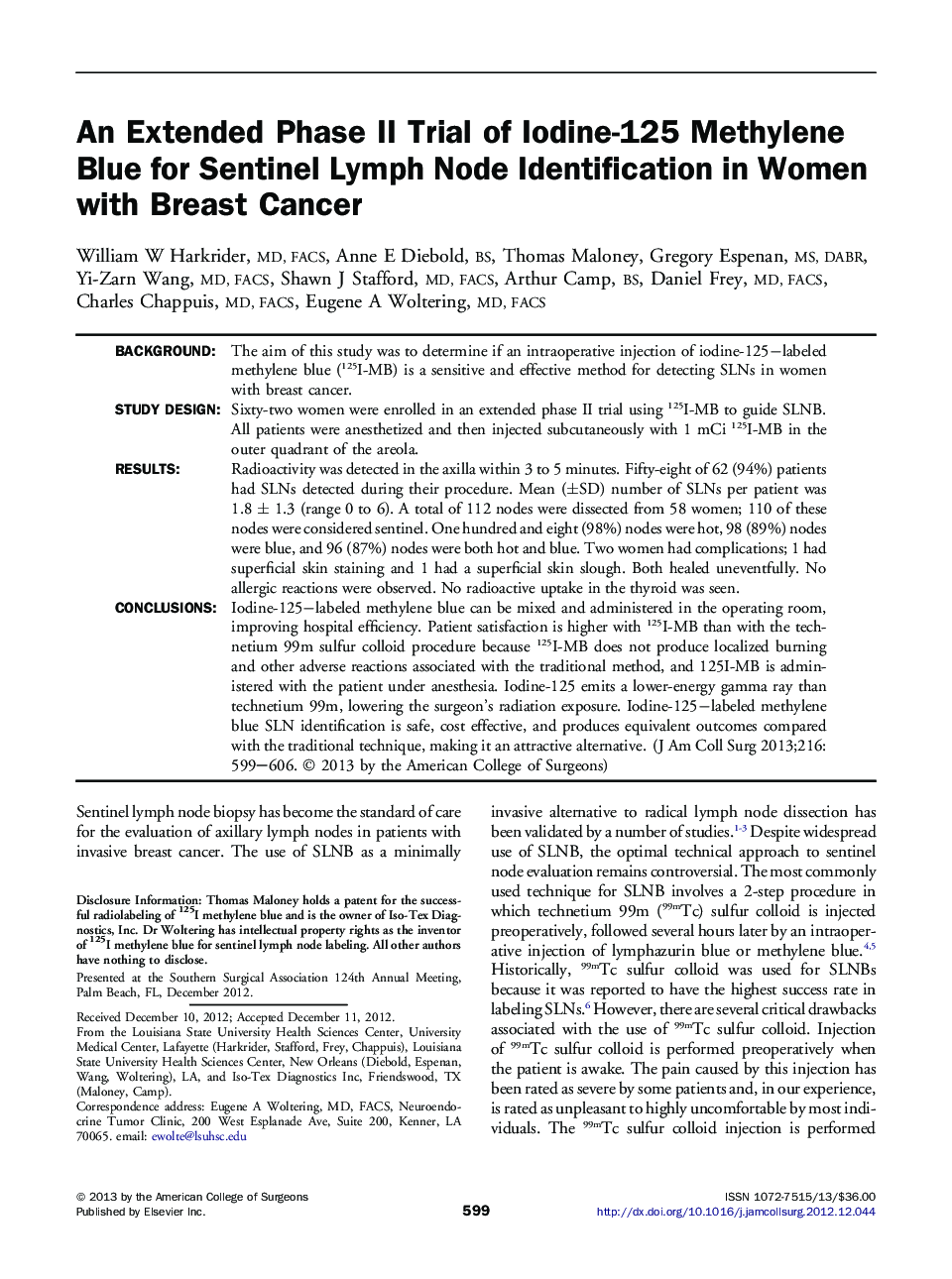| Article ID | Journal | Published Year | Pages | File Type |
|---|---|---|---|---|
| 4293085 | Journal of the American College of Surgeons | 2013 | 7 Pages |
BackgroundThe aim of this study was to determine if an intraoperative injection of iodine-125−labeled methylene blue (125I-MB) is a sensitive and effective method for detecting SLNs in women with breast cancer.Study DesignSixty-two women were enrolled in an extended phase II trial using 125I-MB to guide SLNB. All patients were anesthetized and then injected subcutaneously with 1 mCi 125I-MB in the outer quadrant of the areola.ResultsRadioactivity was detected in the axilla within 3 to 5 minutes. Fifty-eight of 62 (94%) patients had SLNs detected during their procedure. Mean (±SD) number of SLNs per patient was 1.8 ± 1.3 (range 0 to 6). A total of 112 nodes were dissected from 58 women; 110 of these nodes were considered sentinel. One hundred and eight (98%) nodes were hot, 98 (89%) nodes were blue, and 96 (87%) nodes were both hot and blue. Two women had complications; 1 had superficial skin staining and 1 had a superficial skin slough. Both healed uneventfully. No allergic reactions were observed. No radioactive uptake in the thyroid was seen.ConclusionsIodine-125−labeled methylene blue can be mixed and administered in the operating room, improving hospital efficiency. Patient satisfaction is higher with 125I-MB than with the technetium 99m sulfur colloid procedure because 125I-MB does not produce localized burning and other adverse reactions associated with the traditional method, and 125I-MB is administered with the patient under anesthesia. Iodine-125 emits a lower-energy gamma ray than technetium 99m, lowering the surgeon's radiation exposure. Iodine-125−labeled methylene blue SLN identification is safe, cost effective, and produces equivalent outcomes compared with the traditional technique, making it an attractive alternative.
